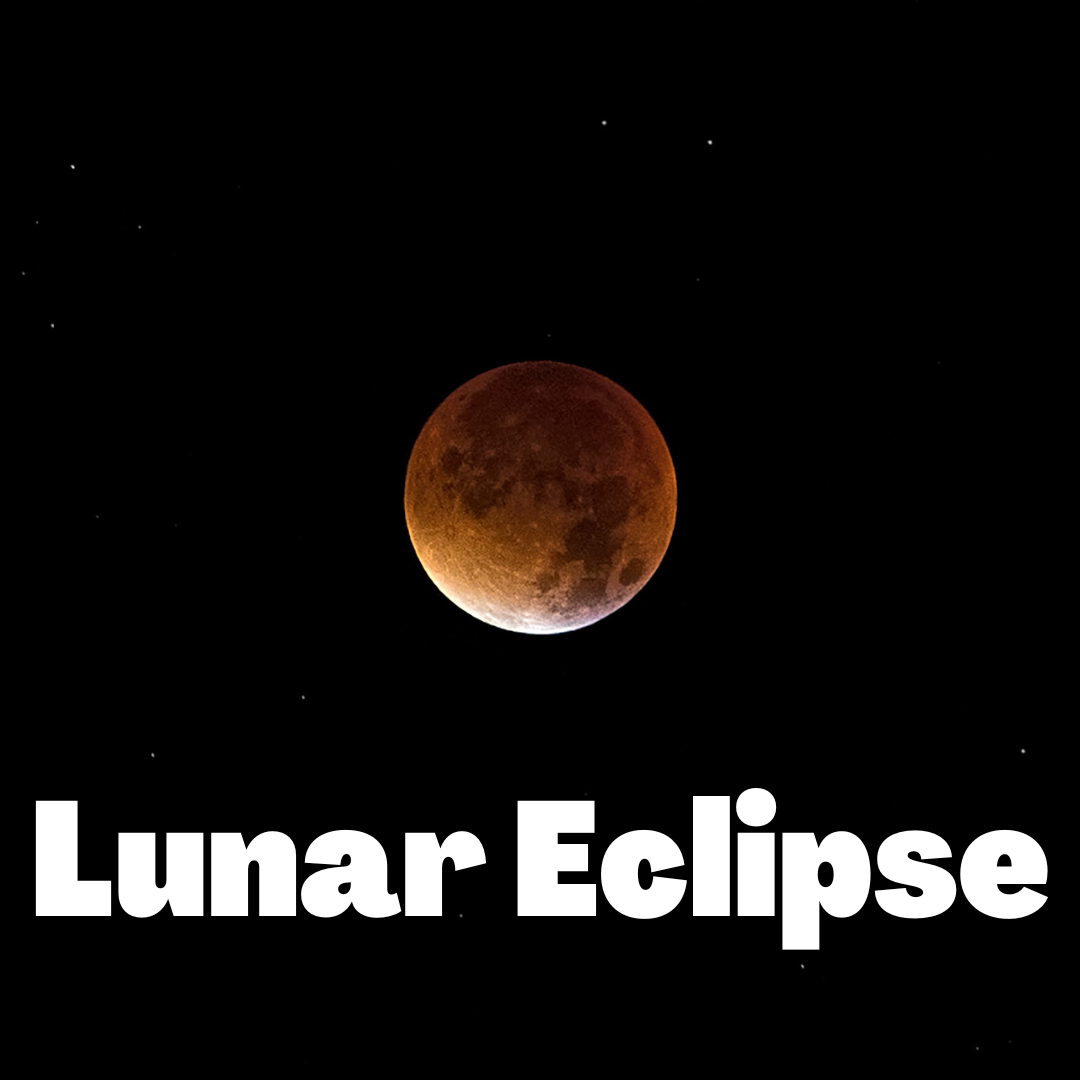A lunar eclipse is when the moon moves directly into Earth’s shadow. The means that the Sun and the moon are on either side, with the Earth sandwiched in-between. The astronomical term for this occurrence is a syzygy.
When the eclipse “reaches totality” (when the moon is totally covered by the Earth’s shadow), you can see the moon become what’s known as a Blood Moon. Because of sunlight being scattered by Earth’s atmosphere, the moon doesn’t completely go dark as the sun would in a solar eclipse. Instead, based on the proximity of the Earth and the Moon, and the specific alignment of the syzygy, the Moon appears in a shade of red, orange, yellow, brown, or copper, which is where the name, Blood Moon, comes from.
A lunar eclipse usually takes a few hours to happen, going through 7 specific steps as these hours progress.
The first stage is the penumbral eclipse. This happens when the outer part of Earth’s shadow (the penumbra) starts to cover the moon. It’s not something that you can see with the naked eye.
The second stage is the partial eclipse. The main part of Earth’s shadow (the umbra) starts to cover the moon and therefore, the eclipse is more visible.
The third stage is the total eclipse. The umbra completely covers the moon, and you can see the moon as an actual Blood Moon.
The fourth stage is the maximum eclipse, or the climax of the lunar eclipse. It can last anywhere from up to a few seconds to an hour and 40 minutes.
The fifth stage is the total eclipse ending. Earth’s umbra starts to leave the moon’s surface.
The sixth stage is the partial eclipse ending. At this point, Earth’s umbra has completely left the moon’s surface.
The seventh, and last stage is the penumbral eclipse ending. Now, the eclipse ends and all of Earth’s shadow has moved away from the moon’s surface.
Have you seen any total lunar eclipses?

